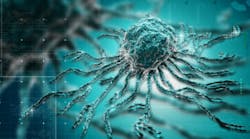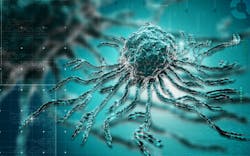Dental stem cell regeneration techniques may spell the end of tooth decay as we know it
The days of treating a cavity with amalgam or composite may soon be coming to an end. Preclinical findings using stem cells to stimulate dental pulp into creating its own replacement tissue are looking quite promising.
Researchers at Harvard University, the University of Texas, and Britain’s University of Nottingham have successfully produced synthetic biomaterials that, when placed in direct contact with dental pulp tissue, stimulate the native stem cell population to repair and regenerate pulp tissue and the surrounding dentin. (1) In essence, the carious lesion gets filled with new, natural, bony tissue, instead of being filled with a foreign and inorganic restorative material.
Because stem cell research on humans is not yet approved in the United States, the experimentation so far has been relegated to laboratory mice. But so far, the results demonstrate that stem cells from other teeth (typically a patient’s back molars or wisdom teeth) injected into the decaying tooth will result in the growth of replacement tissue and blood vessels. Because wisdom teeth are generally extracted and discarded during normal planned dental procedures, they could potentially provide a less invasive source for the stem cells—especially because these teeth are still undergoing root development and can provide the appropriate cells for regeneration treatment.
A group of molecules called glycogen synthase kinase inhibitors (or GSK-3 inhibitors) can bolster dentin production, and one of the GSK-3 inhibitors, called tideglusib, has already been approved for testing in Alzheimer’s patients, clearing one major hurdle standing before human trials.
While stem cell research is currently the preeminent area of focus when it comes to tooth regeneration technology, researchers at the Wyss Institute at Harvard University have found success using lasers to bring about treatment. (1) Small doses of low-power laser light have been shown to activate dental stem cells in rat teeth to grow dentin. Their findings may lead to new approaches to develop low-cost noninvasive therapies for tooth regeneration as well. Since lasers are already routinely used in a number of medical procedures, the barriers to clinical trials and regulatory approval will be lower.
In the end, how will these advances in tooth regeneration favor the patient experience? According to the American Academy of Implant Dentistry, more than 3 million Americans have dental implants, which come with the potential for a host of problems, such as rejection to infection. (2)
There’s also a substantial time expense and commitment when it comes to placing implants, which can take anywhere from six weeks to six months. Right now, the time to regrow and repair tooth damage with stem cells is taking about nine weeks. As the science improves, chances are that growth period can be hastened.
Between 2017 and 2024, over 18 million dental procedures are expected to be carried out as the world’s geriatric population continues to grow. (3) Many of these procedures will involve root canals and implants. It should only encourage further research that a strong and ready market of patients is waiting for tooth regeneration technology once it can be brought to market.
References
1. Researchers use light to coax stem cells to repair teeth. Wyss Institute website. https://wyss.harvard.edu/researchers-use-light-to-coax-stem-cells-to-repair-teeth/. Published May 28, 2014.
2. Dental implant facts and figures. American Academy of Implant Dentistry website. https://www.aaid.com/about/Press_Room/Dental_Implants_FAQ.html.
3. Global Tooth Regeneration Market, By Application (Enamel, Dentin, Pulp), Population Demographics (Geriatrics, Middle Aged, Adult), and Geography - Insights, Opportunity Analysis, and Industry Forecast till 2024. Coherent Marketing Insights website. https://www.coherentmarketinsights.com/market-insight/tooth-regeneration-market-75. Published March 2017.
Editor's note: This article first appeared in the Apex360 e-newsletter. Apex360 is a DentistryIQ partner publication for dental practitioners and members of the dental industry. Its goal is to provide timely dental information and present it in meaningful context, empowering those in the dental space to make better business decisions.
Not a subscriber? Subscribe to the Apex360 e-newsletter here.Adam S. Harwood, DMD
Adam S. Harwood, DMD, is a graduate of the Tufts University School of Dental Medicine with an advanced degree in endodontics. He was the first endodontist in New York to use a surgical operating microscope. Also, he is a member of the ADA and a specialist member of the American Association of Endodontists. He has taught endodontics at the Tufts University School of Dental Medicine, New York University School of Dentistry, and the Metropolitan Hospital Center.


